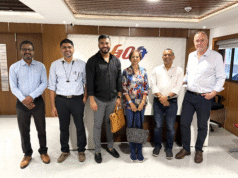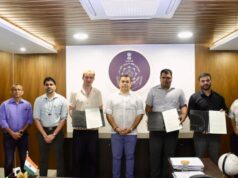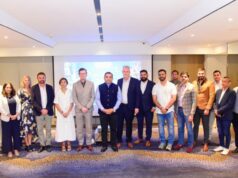Creative Community of Goa (CCG), a collective of creative professionals working towards positioning Goa as the Design Capital of India, hosted the 8th edition of First Fridays at Villtrans Pvt. Ltd., Fatorda. The meet up was organised by the Startup and IT Promotion Cell (SITPC), the Department of Information Technology, Electronics and Communications (DITE&C), Government of Goa and ADI Goa.
The highlight of the event was a discussion on the proposed Design Policy for Goa, spearheaded by the SITPC, and the pre-launch of the CCG’s website, a platform for connecting creative communities across the state.
Opening the discussion, D S Prashant, CEO of the Startup and IT Promotion Cell, stated: “Nine months ago, we initiated efforts to strengthen the design community and develop a comprehensive design policy. Our goal is to unite as a team and attract like-minded companies to establish a presence in Goa. As part of the Government, we are focussed on branding Goa as a creative hub and identifying the opportunities available here, while ensuring the ecosystem’s needs are voiced and addressed.”
Deepak Pathania, Chief Design Officer at Seahorse Air Limited (UK) and Director at Design Intervention (India), as well as a founding member of CCG, shared the journey of the Creative Community of Goa. He expressed, “In November 2023, we began discussions on the design policy, supported by the Startup and IT Promotion Cell, the Government of Goa. The aim is to tap into Goa’s creative potential, both as an economic and cultural resource, with the government’s vision to position the state as the Creative Capital of India. The CCG has laid a promising foundation, with a growing membership, the launch of its website featuring a unified database, and the development of a WIP document to identify the community’s challenges.”
The event space at Villtrans Pvt. Ltd. served as a great backdrop, featuring various drone models displayed as WIP (work in progress) for Deepak’s innovative project, the Seahorse H5—a low-flying VTOP rotorcraft designed by Seahorse Air Limited and being produced by Villtrans Pvt. Ltd.
He further announced the pre-launch of the website, exclusively for community members to explore its features while it is still in the development phase. Expected to be fully functional by mid-October, the website has been programmed by Wendham Gray, designed by Saurav Roy, and conceptualised by Deepak Pathania. He explained that the site will allow users to view by category or discover by region, helping individuals connect with like-minded professionals. The platform will also include recaps of past First Friday meet-ups, a Get Support section detailing state and national government grants and schemes, as well as private sector initiatives for the creative sector. Additionally, there will be open calls for collaborations, a “What’s Happening in Goa” section highlighting design-related events, and a community board for job postings. The directory of CCG members will further help strengthen collaboration and growth within Goa’s creative ecosystem.
The CCG website will also work to integrate the GSIA database and include a network of unregistered vendors who excel in their craft but may lack a strong digital presence. This effort will promote cross-linking between creative/design professionals and Goa’s industrial units and vendor base, enhancing collaboration and expanding opportunities for both sectors.
Sharing the Government’s outline of the Goa Design Policy, it aims to strengthen design capabilities across sectors. The vision is to establish Goa as a global hub for design and innovation, fostering an ecosystem that attracts and nurtures creative talent. The mission is to create a supportive environment for design-driven enterprises, promote sustainable development, and preserve Goa’s heritage while driving economic growth.
The policy’s objectives include promoting collaborative development, positioning Goa as the Creative Capital of India, and creating an ecosystem that supports the entire lifecycle of design—from ideation and prototyping to production and marketing. It aims to strengthen Goa’s design community through a comprehensive framework, adopt global best practices, and attract investments, including foreign direct investment, in design services and design-related R&D. Moreover, the policy seeks to build a platform for creative design development, promotion, and partnerships across sectors, states, and regions.
Key components discussed till date by the community include infrastructure augmentation, design skill development, support for creative businesses, a robust regulatory and policy framework, the establishment of creative parks and design districts, and technology integration. The government is also focusing on expanding the digital nomad community in Goa through the introduction of a Digital Nomad Policy and a Digital Nomad Visa.
Participants emphasised the need for spaces where individuals can establish their studios or creative workspaces. They also suggested utilizing college campuses for creative events to raise awareness about communities like CCG, suggesting the setup of stalls to increase visibility for such initiatives. In response, Mr. Deepak highlighted the importance of student involvement, recommending the introduction of a membership option to encourage students to engage with and contribute to this growing creative ecosystem.
The 8th edition of First Fridays set the stage for exciting developments, with the upcoming launch of CCG’s website and the ongoing progress of the Goa Design Policy. These initiatives are driving the momentum needed to position Goa as a global hub for design, creativity, and innovation.






